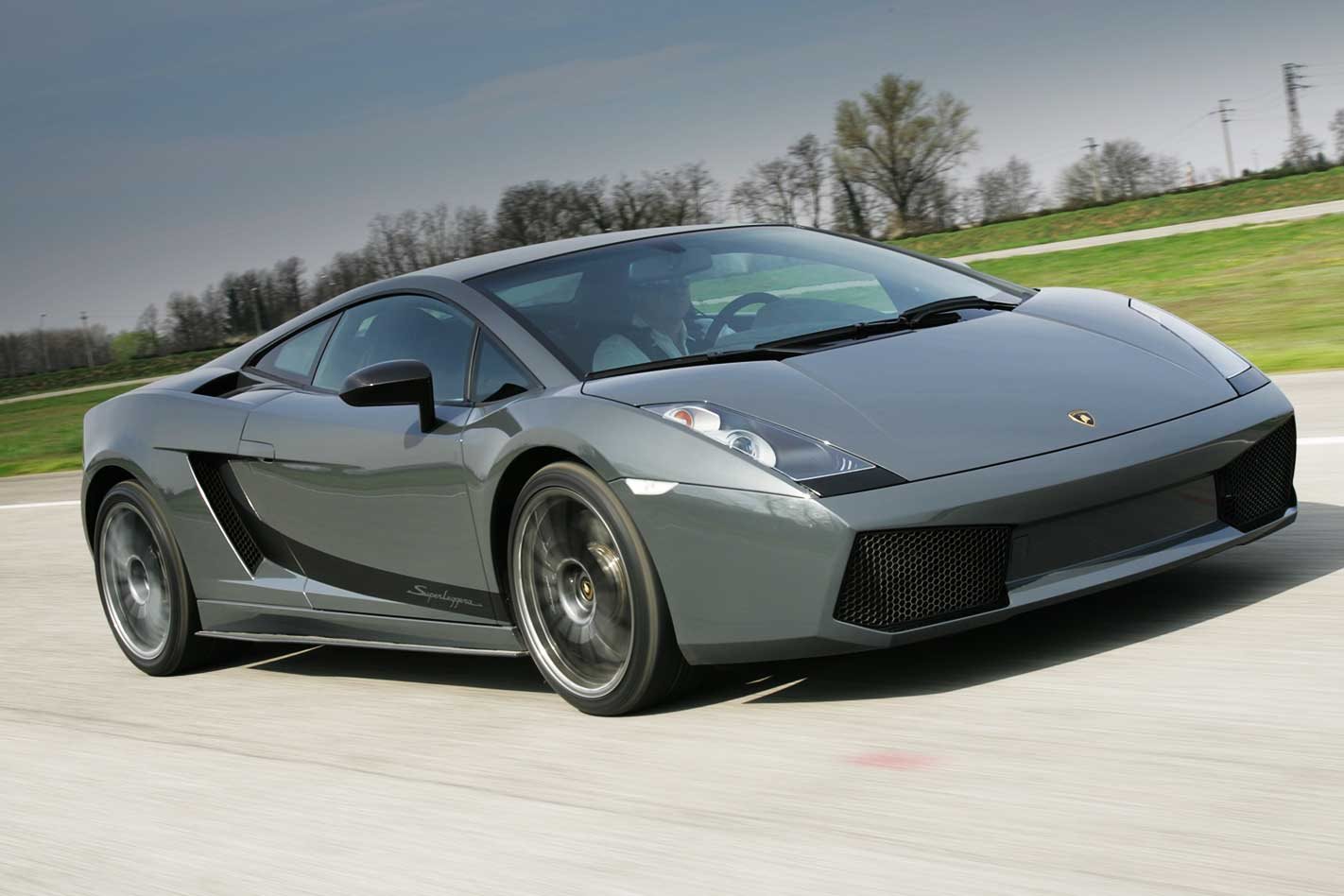Today is not a good day. Today, I am sore. Today, the skin on both sides of my neck is red and raw from the chafing of racing seat belts. Today, my legs are tender from working against extreme g-loads. Today, the muscles at the sides of my neck twinge with every sideways glance.
This review was originally published in MOTOR’s May 2007 issue
But I can live with all that today, because it reminds me of a yesterday that I want to have again. Yesterday was a Gallardo Superleggera day, with semi-race rubber and carbon-ceramic brakes on a purpose-built test track in Italy’s north.

Visually at least, the Superleggera isn’t demonstrably different from the stock four-year-old Gallardo coupe. There’s a naff, matt-black slash sweeping up the door and into the air intake, and a subtle, fixed carbon-fibre wing and, really, not much else.
The cool thing about this car isn’t that it’s more powerful than standard (at 395kW, you barely notice the extra 7.5kW), but that it is so much lighter. It has amazed most people that Lamborghini found 100kg (actually, it found 104kg) to strip out of a car that was slightly anorexic in the first place. Well, Superleggera is Italian for ‘light weight’ so it makes sense.

The door actually feels lighter than the standard door when you open it, and you soon see why. The inner skin is lacquered carbon-fibre, set in one massive sheet, broken only by an alcantara loop so you can pull it closed behind you.
The seat is deeper and shelled in carbon-fibre (which is prominent throughout), so the electronic controls are gone, the leather has gone, the squishy padding is gone, and the pattern is kind of a funky modern twist on 1960s cool. The driving position loses nothing for the change, though. The race-based seats are extremely comfortable – at least for this kind of work – and they promise plenty of lateral support.
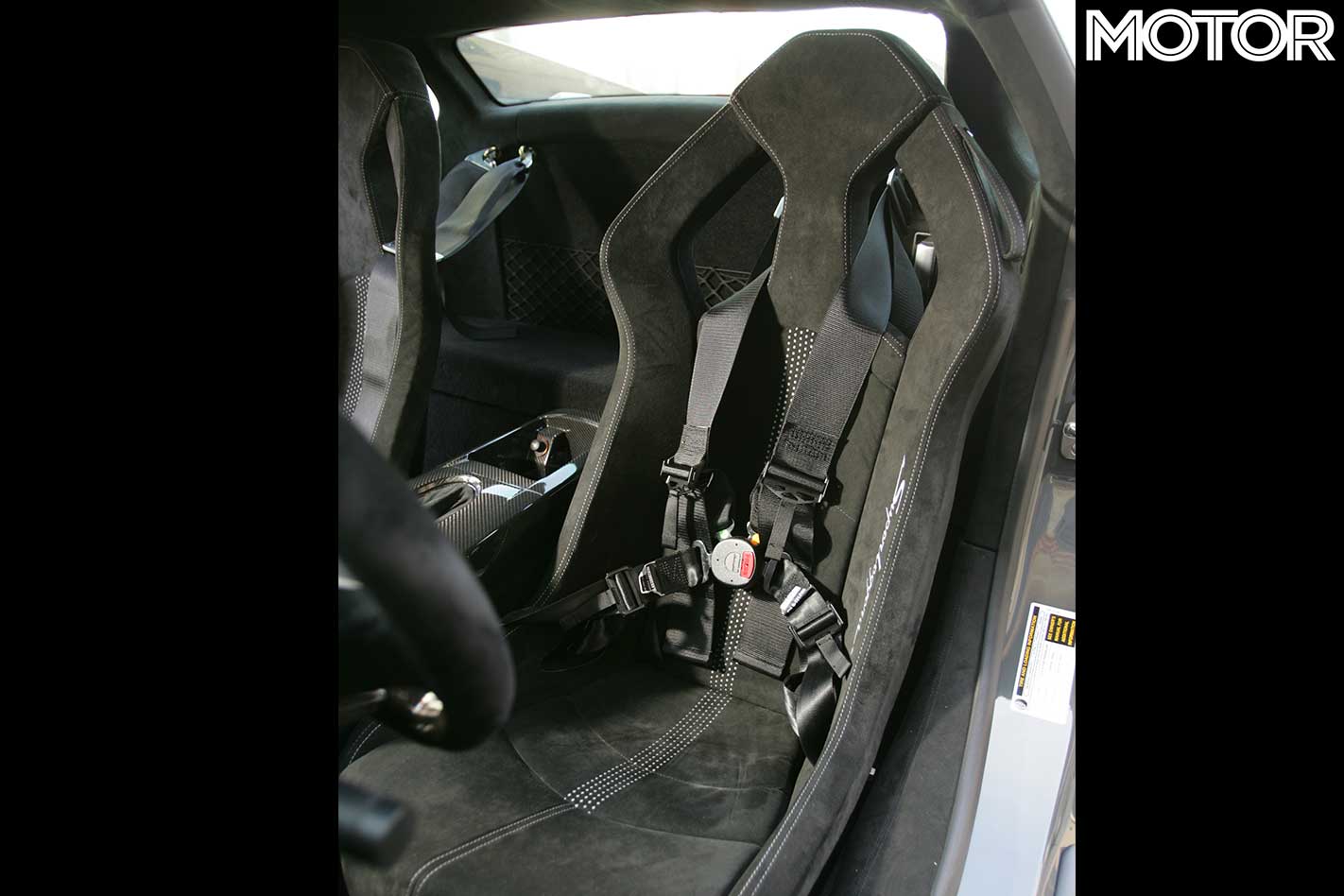
The engine sounds marginally different at idle, in spite of Lamborghini insisting it’s identical in its note to the standard car. Perhaps it’s because the sound deadening of the carpet and leather have gone. It feels lumpier and angrier before you’ve even turned a wheel. Pluck the right paddle, cruise off through the car park and the ride is instantly firmer than the stock car, but that’s about the only difference in its feel.
At normal speeds, most drivers won’t notice the lack of weight. And normal speeds are the speeds most drivers are capable of in this sort of car. It’s only when you push – and push hard – that the missing metal becomes noticeable, and then, suddenly, it’s very, very noticeable.
It still feels like it needs more torque below around 4500-5000rpm, because quite frankly it’s nothing special there, but anything above that is an eruption waiting to happen.
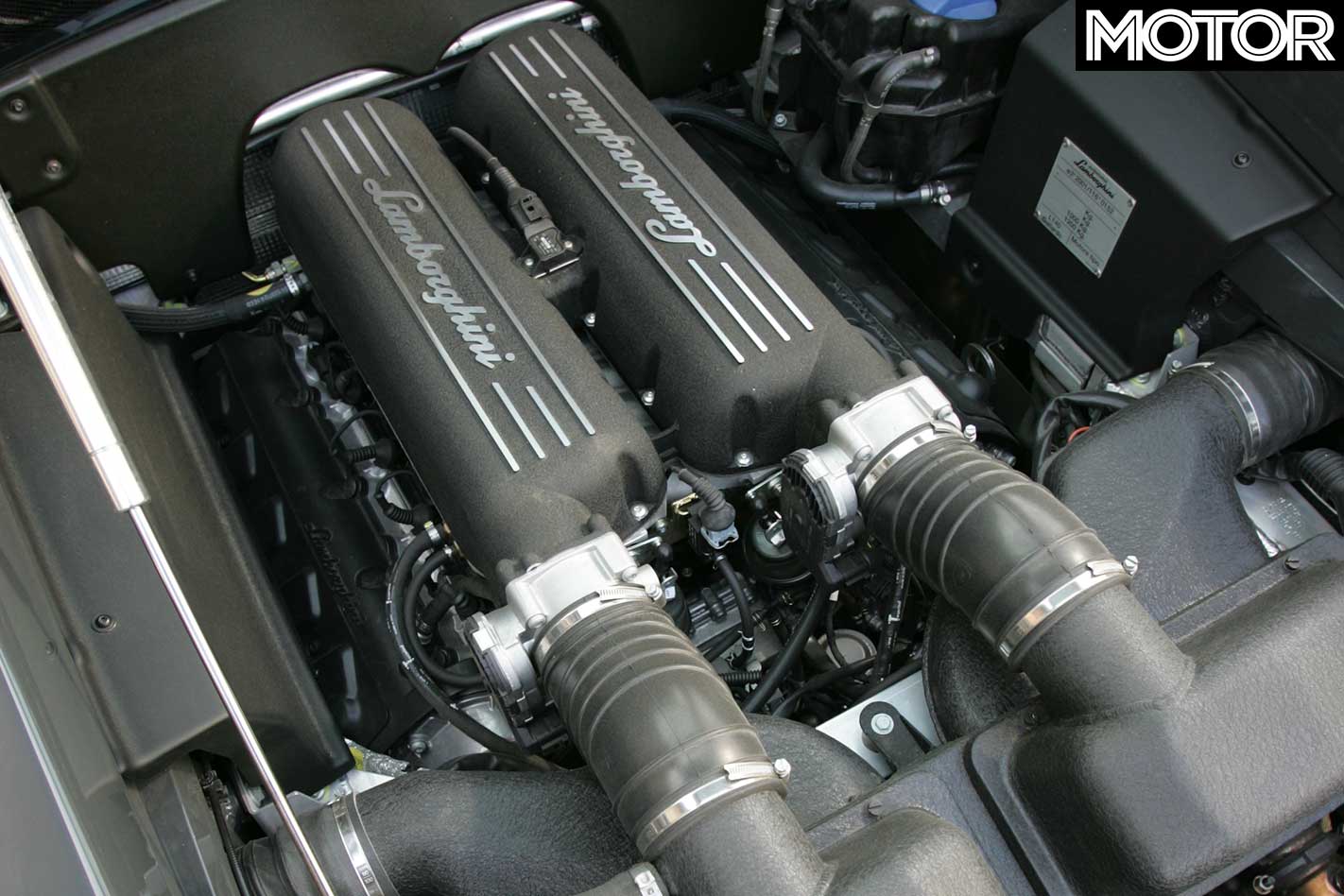
This thing, when it’s under the whip, is just heavenly, but only if your idea of heaven’s got some aggro in it. Roll off gently, snap the throttle the two inches to the stopper and every sense gets something to savour.
Your ears hear it first, with the twin throttle bodies hissing out their trademark “Chhhhshhh” as they flip open to breathe deeply. Then there’s the deep-chested bwoarty blat as the air molecules argue among themselves, arriving in the same place in a hurry.
And all that’s before you can hear any fires being lit. You can smell the fluids getting hot, you can see the world blurring through every window and you can taste the fear of anybody sitting in the car with you.
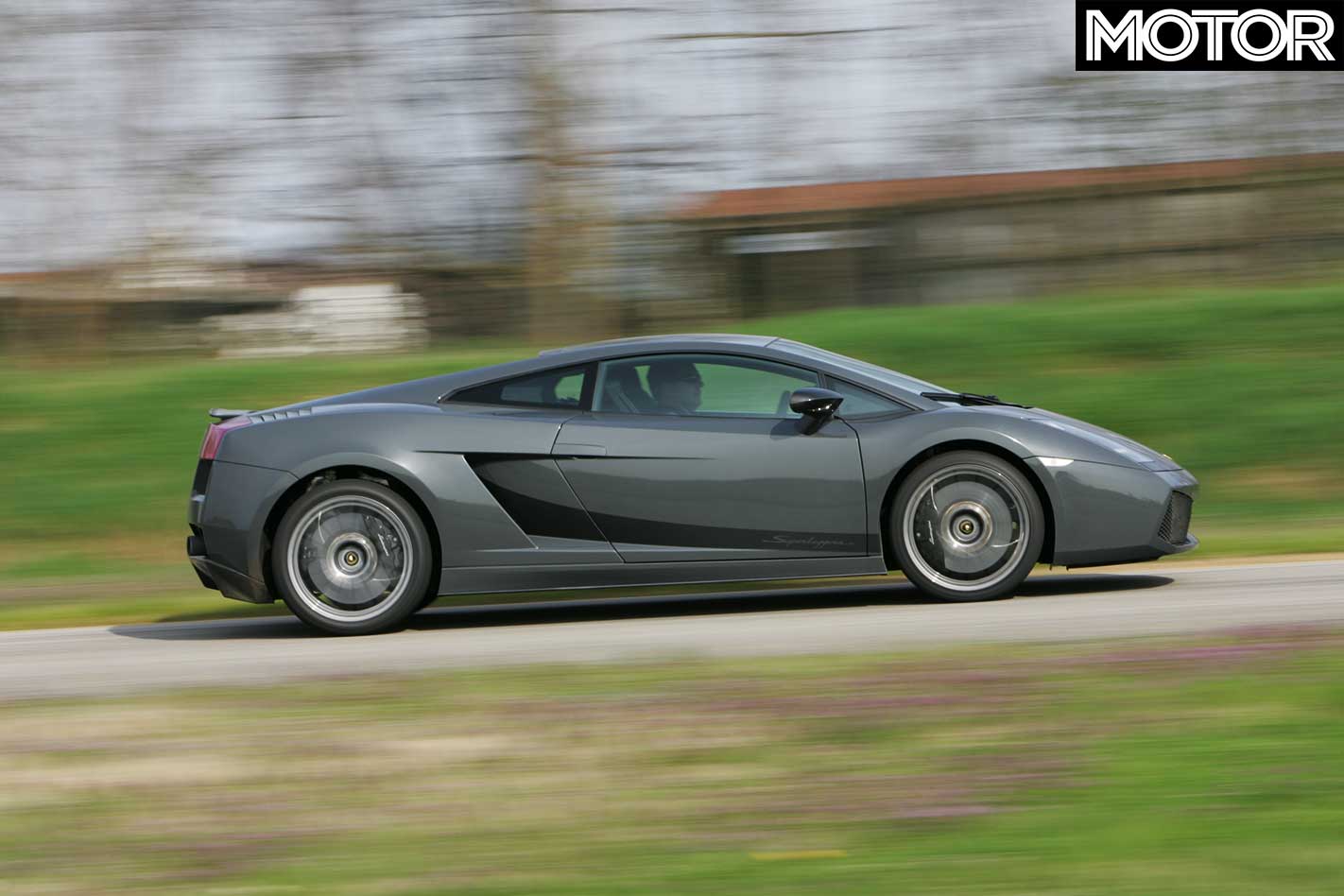
But it’s the sense of touch that tells you the most. The engine snarls and howls and, with the hard-shell seats, you can feel more of every ignition and every electric pump and every induction rumble. You used to just hear it in a Gallardo, but the Superleggera makes it an all-over body experience.
The engine is much more aggressive at higher rpm than it used to be, too. Its inlet manifold has been freed up, and it is snappier, more urgent and even faster to react when you open or close the throttle. If that isn’t enough, the gearshift action is quicker, too, in Sport mode. It’s also more aggressive on the downshift and even though it all feels more raucous, it’s just software tweaks.
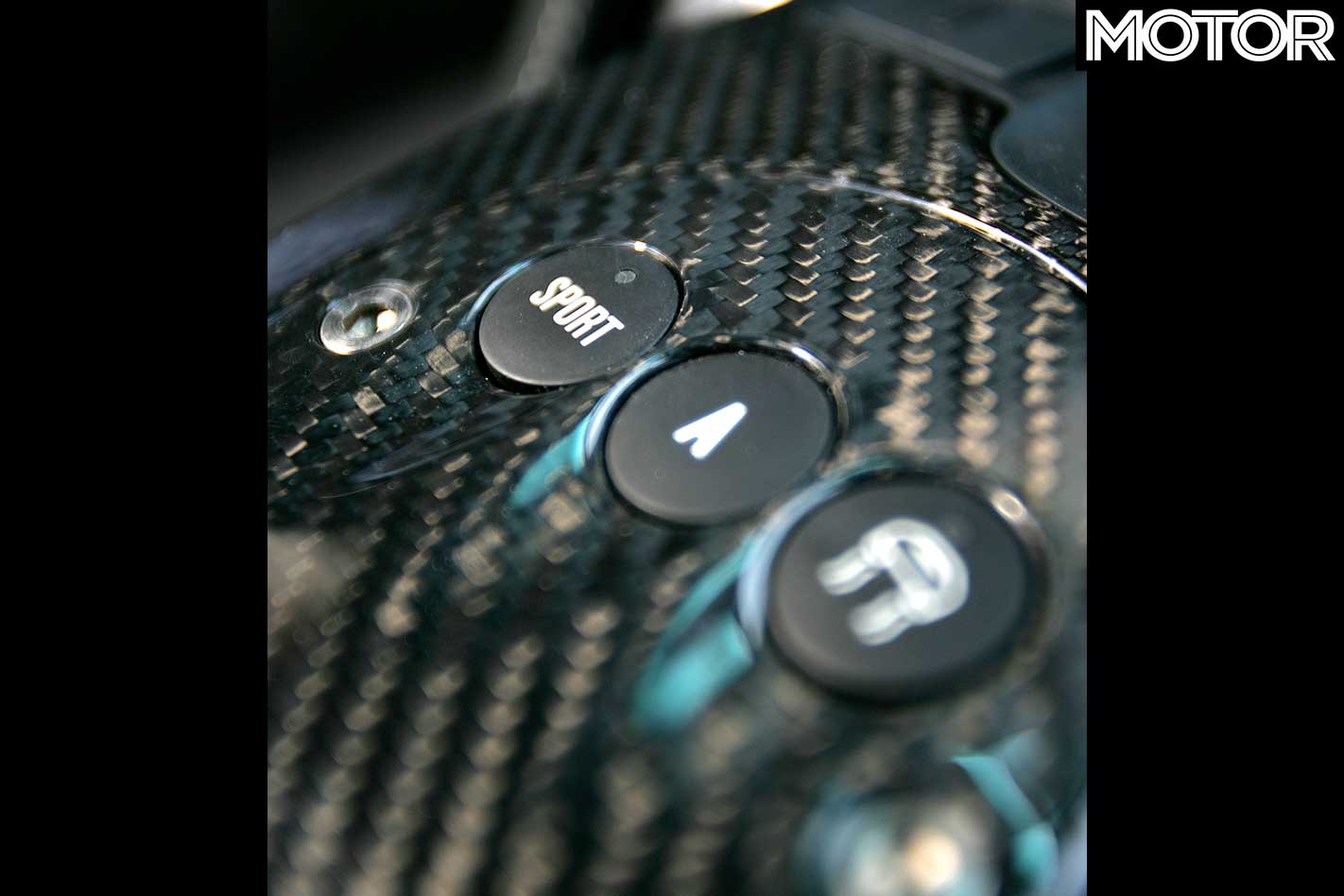
To be honest, though, the weight doesn’t make its lack of presence felt when you’re belting the Superleggera in a straight line. That’s a surprise that really waits until you get into and out of corners. The first shock is your arrival at a stock Gallardo’s braking point, the V10 screaming and about to demand a shift into fifth gear.
Squeeze down hard on the left pedal (on the e.gear – try this in a manual and you’ll be in trouble…), and you’ll find yourself picking up the throttle again before the corner. It’s embarrassingly brave.
There’s bags of feel in the pedal, too, and the pads, snuggled into their eight-piston caliper, sit so close to the carbon-ceramic rotor you only need to sniff the pedal (when they’re hot) before they get to work – without noise and without graunching. You can probably dive in 15 percent deeper than you can with the standard car – itself no stopping slouch.
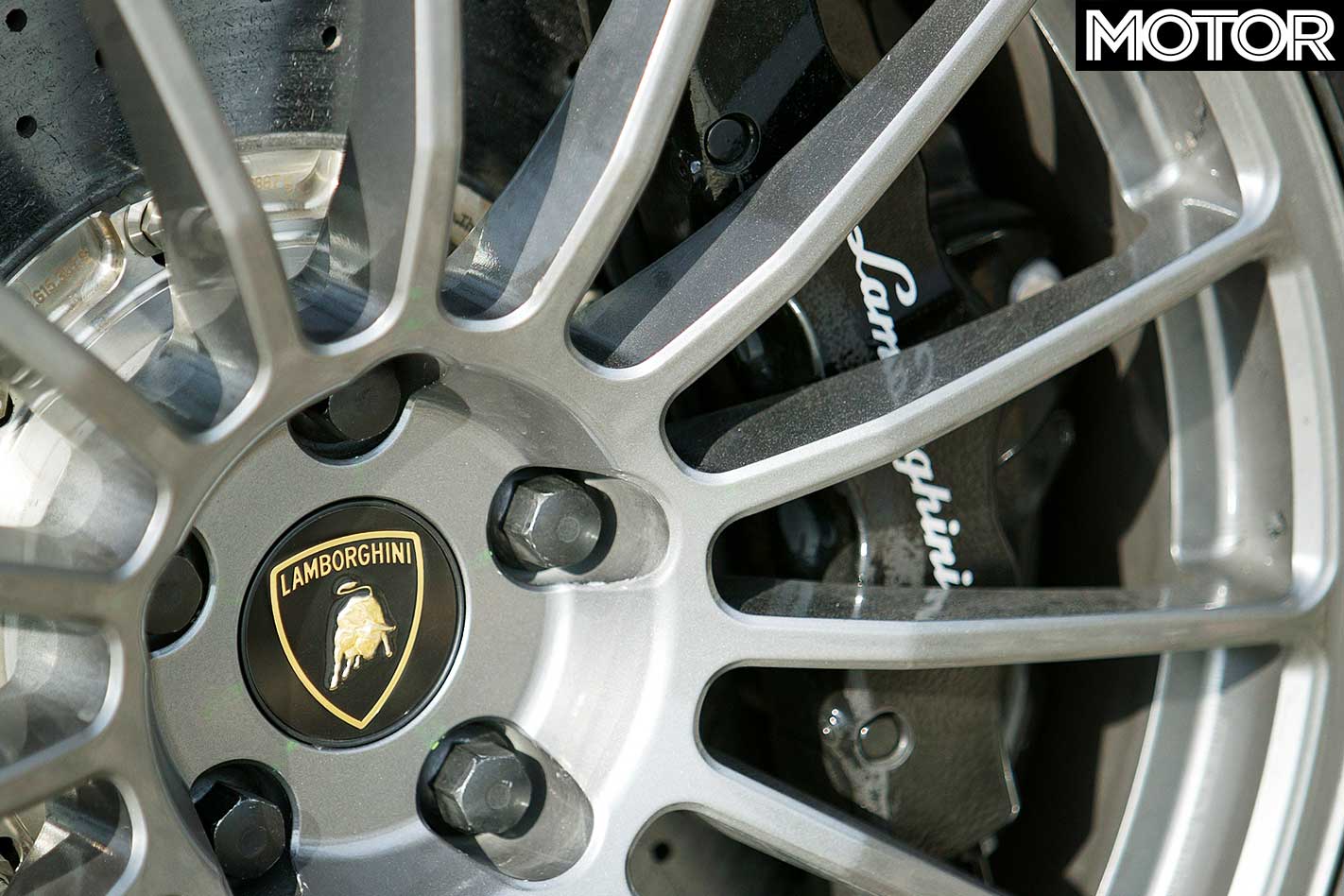
This isn’t all brakes, though. A big slice of this is the Pirelli PZero Corsa super-sticky rubber. The tyres are stubbornly, stupidly sticky. On this car, on this track, they’re as close to slicks as you could hope for, and probably have grip levels similar to a touring car slick from five or six years ago.
This all adds up to a long series of “Oh, My God” moments before you realise that you actually have to knuckle down and work hard to get at its grip limits, regardless of whether you’re in first-, second-, third- or fourth-gear corners. (Though it’s the fourth-gear corners that actually get kinda scary.)
With steering slightly heavier than that on the standard car, the flat-bottomed suede-and-carbon wheel steers straight for heaven, with a constant song of contact and detail.
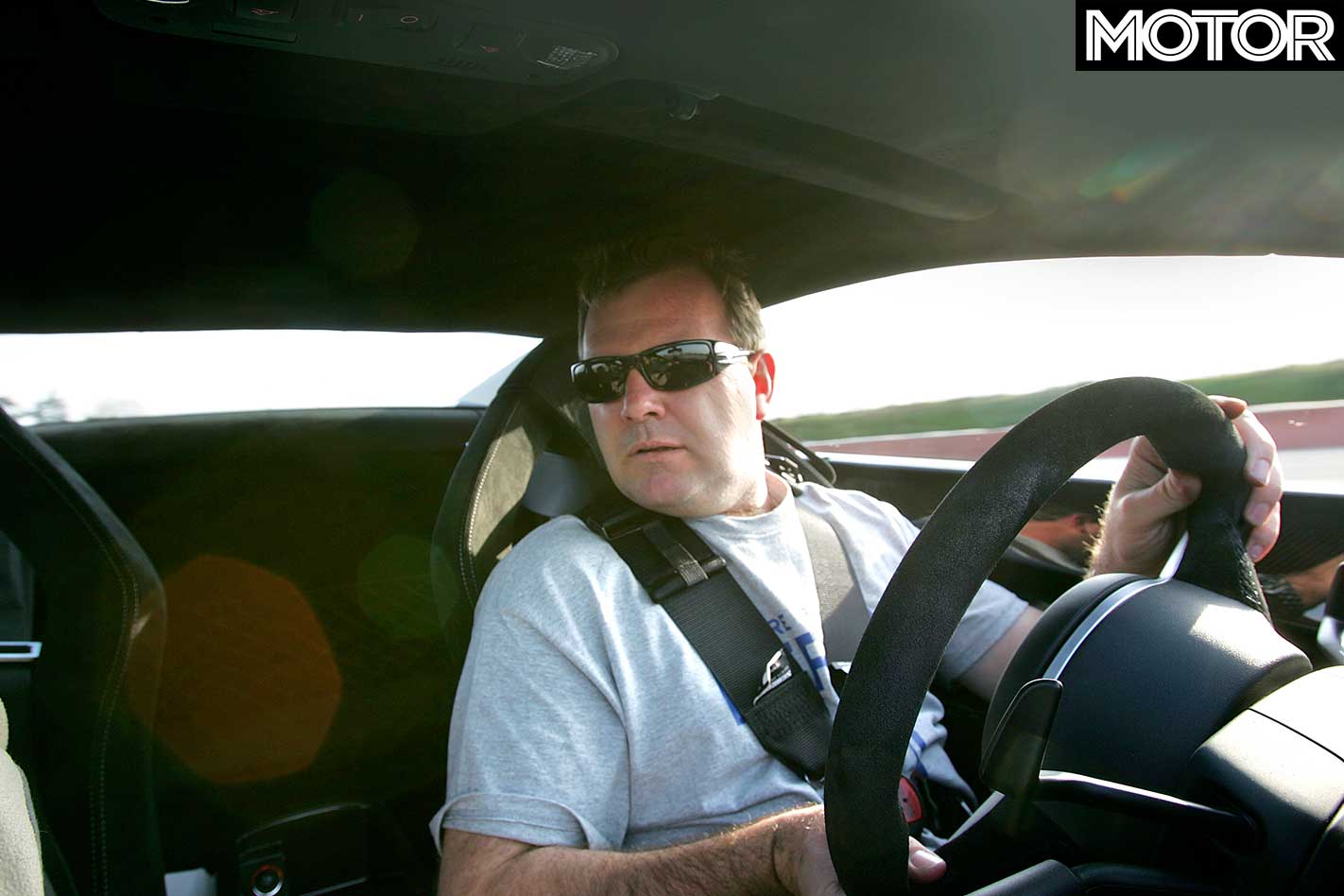
Give it a little bit of spring back at the front, and the Superleggera will just snap into the long, second-gear sweeper. It just loads up and up, and builds into an insistent, constant shove on your neck and innards, finally giving you a rest when the nose runs out of grip deep into the world of the crazy.
But its tricks don’t stop there. When it’s out of grip, it’s one of the world’s easiest cars to adjust, especially in a long corner. Instead of wallowing in a push, it lets you fiddle and play, and the throttle response is so intuitive, you find yourself fiddling with the throttle openings to tuck in the nose or let it run wide again – and, if it’s a long enough corner, you can sneak in eight or nine different changes.
Get it right and you can balance most of the weight on the tail just as you start to straighten up, and it becomes the bullet in the gun, howling and simmering its way out of corners with the mildest trace of oversteer, flinging you harder and harder into the seat’s side supports.

It just hangs on and hangs on and it almost hurts your ribs. The seats grip you hard and long, and they’re so effective you barely have to brace your legs against the car’s huge g loads, which leaves you free to fine-tune your throttle and brake inputs.
It explodes onto the straights like it simply will not let them get in the way of its next corner, where you can stand on the brake pedal and do it all over again. And again and again, as long as your body can cope with being mashed into the seat shell and belts and as long as your arms and shoulders can operate against the loads. It just carries so much mid-corner speed that you never, ever see the ESP light.
When it is needed, though, you’ll be happy it’s there; because you’ll be travelling very quickly and your reaction times will be much, much shorter.

It’s a wonderful car, made more wonderful by the removal of 104kg of stuff that, quite frankly, you hardly miss. I’d take these seats over the stock items any day, for one. It’s not yet perfect, though. Dive into the braking area and it’s oddly grabby on the ABS if you go hard at it with any steering lock on.
The brakes bite very hard, but need quite a bit of temperature in them before they give their best. And then there’s the understeer, but rid yourself of the optional parking assist rams and you’ll rid yourself of a lot of that, too.
Lamborghini will charge more for this car (though how much more, it has yet to decide), and they’ll be right to. It’s a better car, but is it a justifiable spend? Quite frankly, for most people, it isn’t. Most people won’t be able to push it hard enough, often enough, to know where the differences are. But if you’re going to have an outrageous car like a Gallardo, you might as well have as much Gallardo as Lamborghini wants to sell you.
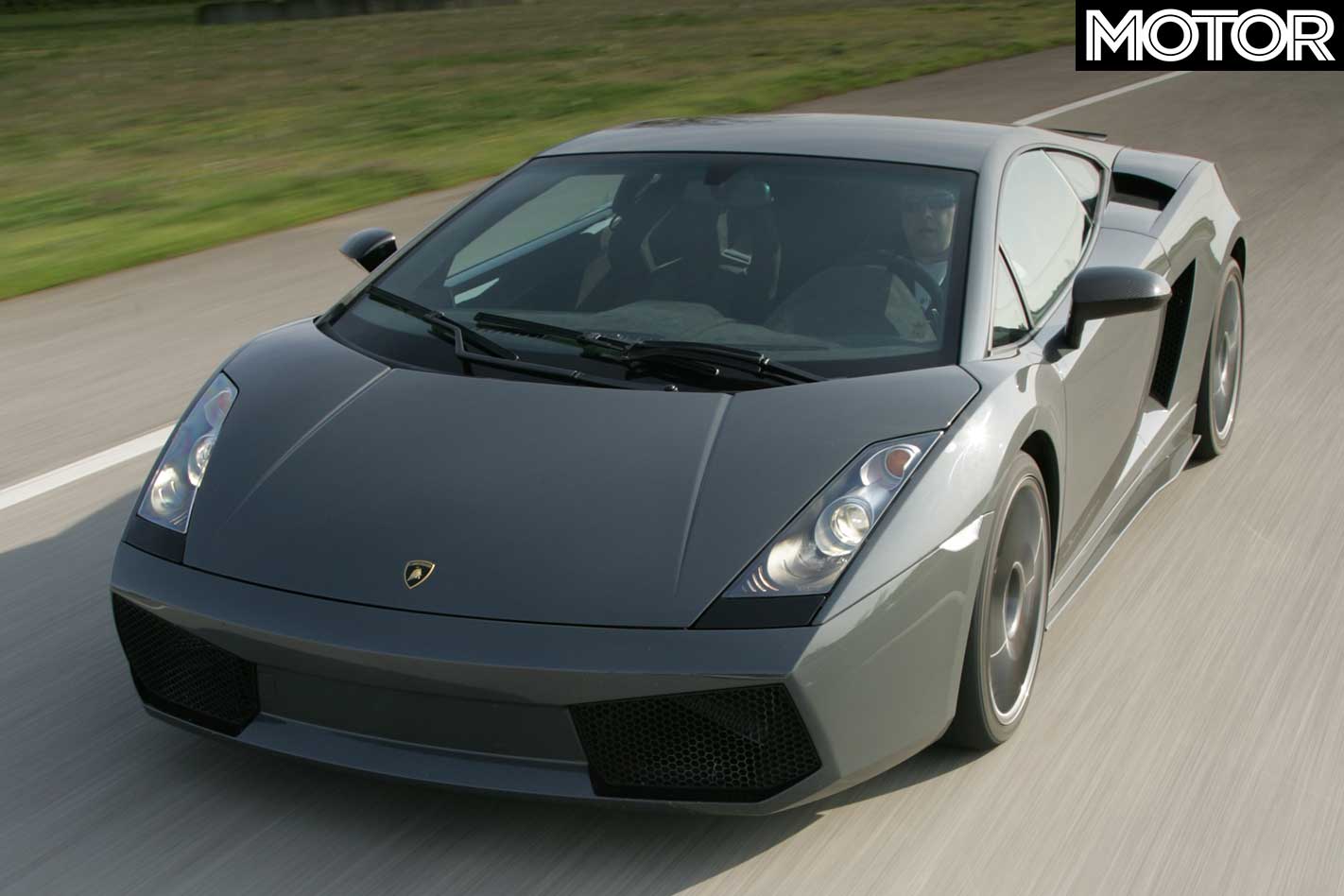
FAST FACTS 2007 Lamborghini Gallardo Superleggera
BODY: 2-door, 2-seat coupe DRIVE: all-wheel ENGINE: 4961cc DOHC, 40v V10 BORE/STROKE: 82.5mm x 92.8mm COMPRESSION: 11.0:1 POWER: 390kW @ 8000rpm TORQUE: 510Nm @ 4250rpm WEIGHT: 1330kg POWER-TO-WEIGHT: 293kW/tonne TRANSMISSION: Six-speed automated manual SUSPENSION: double wishbones, coil springs, self-adjusting dampers, anti-roll bar (f & r) L/W/h: 4300/1900/1165mm WHEELBASE: 2560mm TRACK: 1622mm (f); 1592mm (r) BRAKES: 365mm x 34mm ventilated and cross-drilled discs, eight piston monobloc calipers (f); 335mm x 32mm ventilated and cross-drilled discs, four-piston monobloc calipers (r) WHEELS: 19 x 8.5-inch (f); 19 x 11-inch (r), Scorpius forged alloys TYRES: Pirelli P-Zero Corsa 235/35 ZR19 (f); 295/30 ZR19 (r) PRICE: TBA
The Biggest Loser – How do you rip 100kg out of a modern supercar?
Lamborghini’s Technical Director Maurizio Reggiani was told to pull the 0-100km/h time down to 3.8 seconds, the power-to-weight ratio down to 2.5kg/bhp and to maintain the Gallardo’s balance. Oh, and no turbocharging and stop it, Maurizio, we’re not letting you pull the front diff out because it’s now Lambo DNA. And keep the 40:60 weight distribution. Please.
“The main way to improve the handling is the weight, and 100kg is a dramatic reduction,” Reggiani said. “The behaviour of the car was really impressive when we did this. In the cars this mass that is missing gives an impressive improvement in a fast track where handling is so important.”
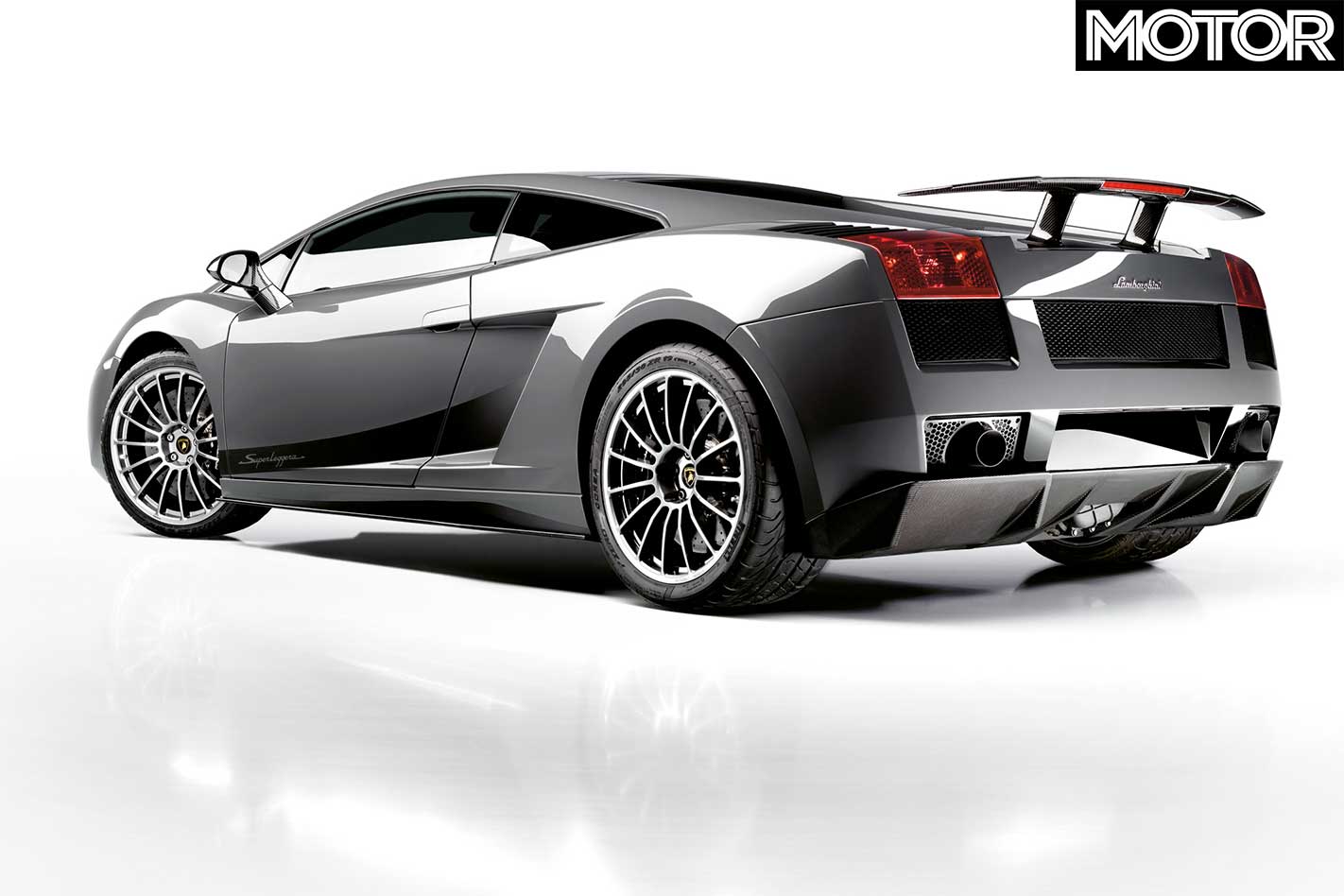
The changes to the engine were limited to the intake manifold, and new, lighter exhaust internals also ease the back pressure, which brought about a new software code and explains the 10 horses. But this car is about weight, not power.
The interior is almost all carbon-fibre, including the inner door skins, the seat shells and the centre tunnel. The door panel used to have plastic and leather and insulation.
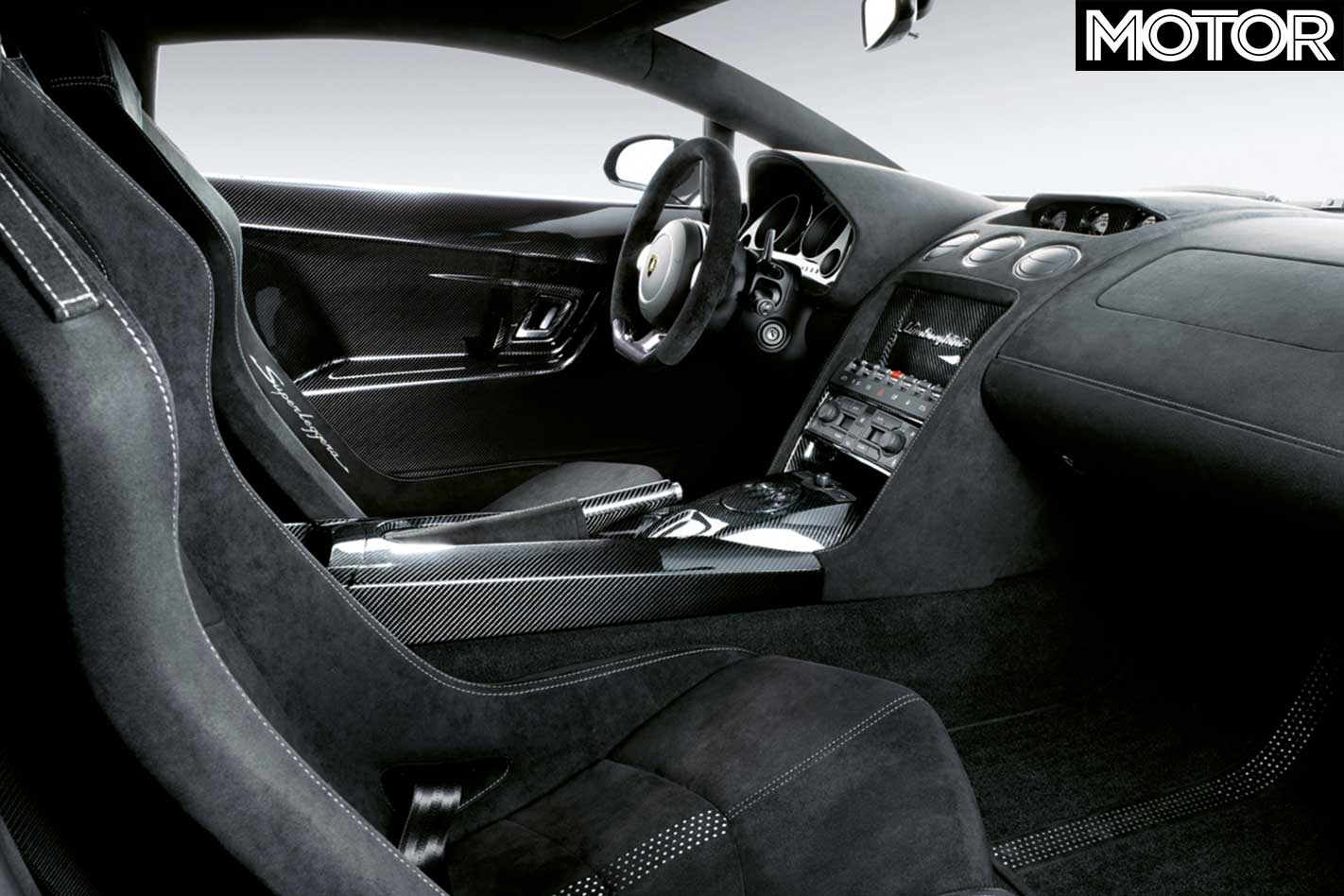
Now it’s just one shape, all in carbon, and saves 2kg per door. The multimedia system went, there’s a lighter steering wheel and anything that was leather is now light-weight Alcantara. The engine cover is now a combination of carbon-fibre and polycarbonate, while the fixed side windows are now polycarbonate as well.
The electronic system to raise the spoiler has gone, and there’s the subtle standard spoiler and a more outrageous one, both in carbon-fibre. The all-new Scorpius rims are forged alloys which are also machined, and save 8kg per corner. The optional carbon-ceramic brake rotors are lighter, but need larger calipers, so the savings are cancelled out.
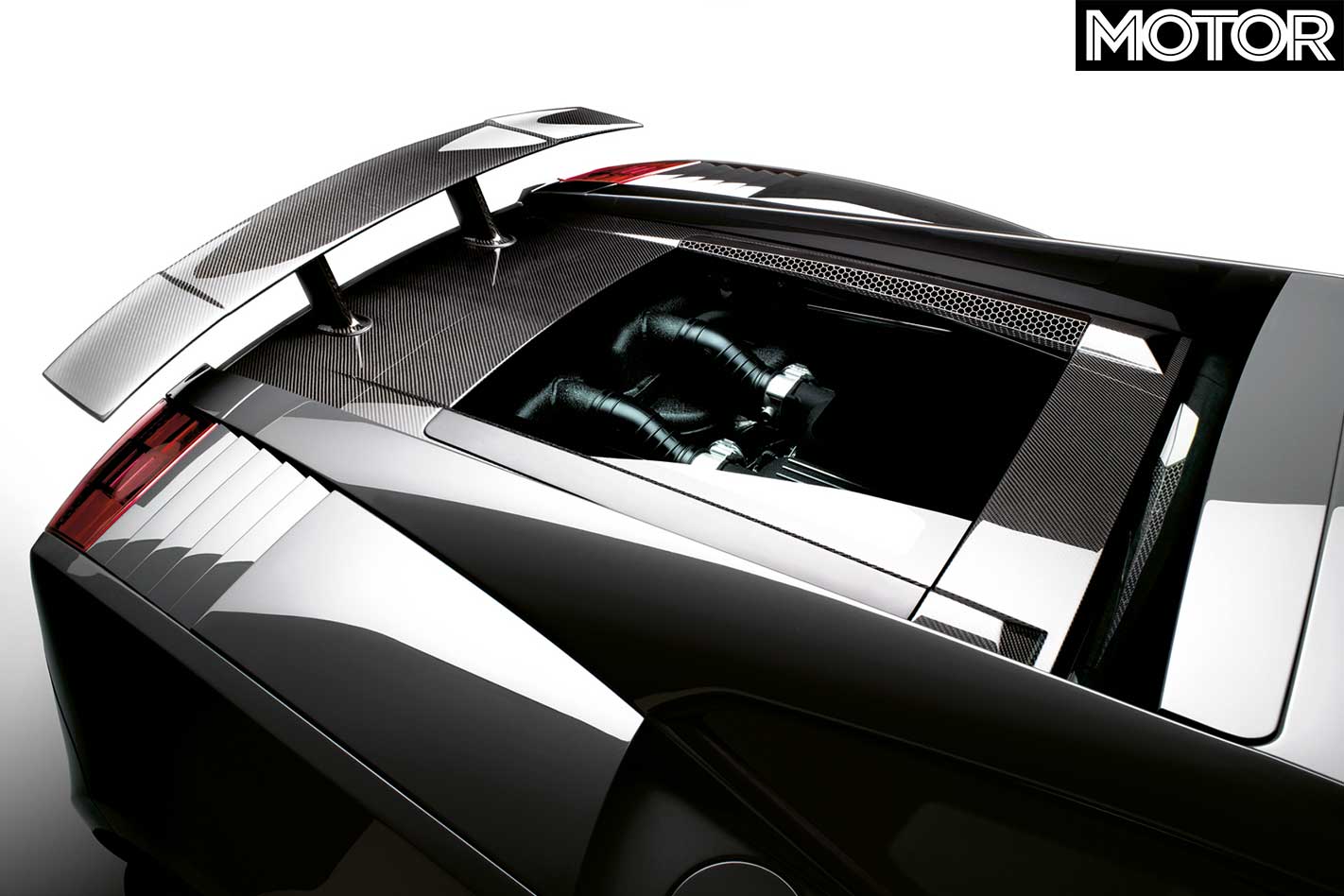
Light-weight materials, like replacing aluminium with magnesium and using other parts instead of steel. “The engine cover and non-structural, non-stressed components, like the gearbox carter, some hangers and brackets, are now magnesium,” Reggiani says. “That saves us around 50kg.
“All of this has lowered the roll centre of the car, but it is so low anyway that it’s not significant. We are speaking of something less than 1mm.”

